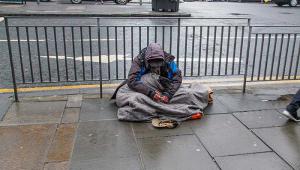The number of suspected victims referred to the National Referral Mechanism shot up from 153 in 2013 to 1,342 in 2018, according to data from the National Crime Agency.
The NRM is the framework through which councils can report suspected victims of modern slavery.
Analysis of the figures by the Local Government Association found that the rate of council referrals increased by 70% in the past year alone, from 789 in 2017, and by 221% in two years, from 418 in 2016.
The LGA noted that no specific funding is available for councils to support victims of modern slavery and warned that it is further evidence of “huge pressures” on children’s services.
Simon Blackburn, chair of the LGA’s safer and stronger communities board, said: “Children and young people face specific risks through county lines drug trafficking or child sexual exploitation, and it’s vital that councils have the resources they need to tackle this abuse and support its victims.
“The spiralling rate of council referrals is having a huge impact on council services already at a tipping point, including children’s services and adult social care. Supporting victims and creating a sustainable NRM system in the long term will require appropriate levels of funding.
“Modern slavery is a rising threat to our communities. Government needs to use the Spending Review to plug funding gaps facing key council services which can help support victims.”
Although the rate of referrals has increased, the government estimates that there are between 10,000 and 13,000 victims of slavery in the UK, but this may be an underestimate.
National Crime Agency deputy director Roy McComb said: “The increase is undoubtedly the result of greater awareness, understanding and reporting of modern slavery, and that is something to be welcomed.
“However, the more we look the more we find, and it is likely these figures represent only a snapshot of the true scale of slavery and trafficking in the UK.”











